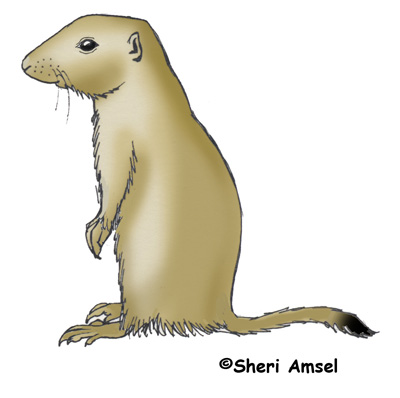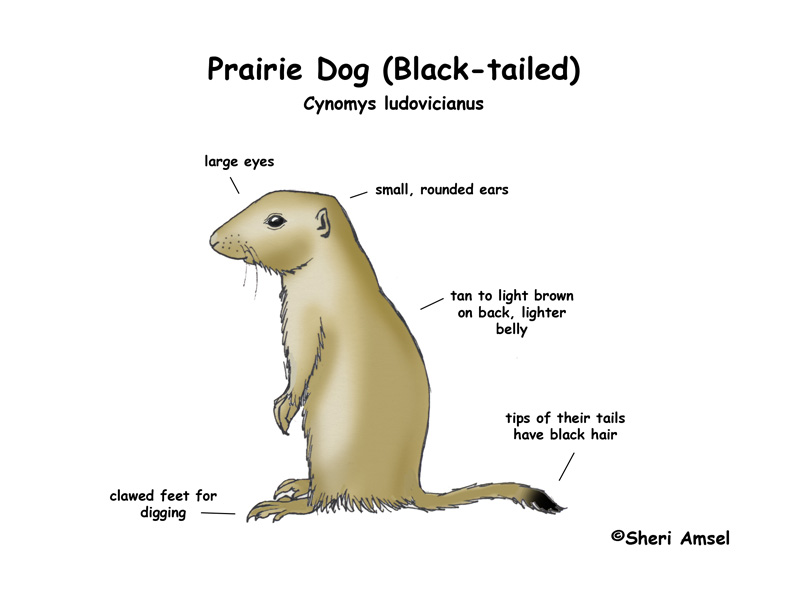


They are found in the prairie regions of south-central Canada south through the prairies of the U.S. in Montana, Wyoming, North and South Dakota, Oklahoma, Nebraska, Colorado, New Mexico, Arizona, Oklahoma and Texas.
They live in dry, lowland mid to short-grass prairies. They like flat, open lands.
They can be up to 17” long and weigh up to 3.5 pounds. They are tan to light brown on back with a white belly, though it’s not unusual to see some that are reddish or even black. The tips of their tails have black hair. They have short ears and large black eyes. Males are larger than females.
They live in colonies called “towns” made up of vast underground tunnels that can have hundreds of prairie dogs. Each town has smaller groupings called neighborhoods (or coteries). When males grow up they leave their neighborhood and join another. Females stay at home in their own neighborhood. They are all very territorial and will defend their neighborhoods. They are active during the day (diurnal) all year. Black tailed prairie dogs do not hibernate.
They eat plants. In their habitat the plants that are available for them to eat are leaves, stems and roots of grasses. It in not unusual for them to eat insects like: grasshopper and beetles too.
They are eaten by badgers, coyote, foxes, bobcats, golden eagles, hawks, and rattlesnakes.
Families are made up of one male and several females (polygamous) and their young. The male mates with all the females in his family group in the winter to early spring (colder areas mate later). Females are pregnant for up to 40 days (gestation). They have up to 8 young, but usually about 3. They will nurse from any mother in their family until they can feed themselves.
They can live up to 8 years in the wild, but usually don’t survive that long. Almost have die in their first year.
They are listed as Lower Risk - near threatened.
Kingdom: Animalia
Phylum: Chordata
Subphylum: Vertebrata
Class: Mammalia
Order: Rodentia
Suborder: Sciuromorpha
Family: Sciuridae
Subfamily: Xerinae
Genus: Cynomys
Species: Cynomys ludovicianus
When you research information you must cite the reference. Citing for websites is different from citing from books, magazines and periodicals. The style of citing shown here is from the MLA Style Citations (Modern Language Association).
When citing a WEBSITE the general format is as follows.
Author Last Name, First Name(s). "Title: Subtitle of Part of Web Page, if appropriate." Title: Subtitle: Section of Page if appropriate. Sponsoring/Publishing Agency, If Given. Additional significant descriptive information. Date of Electronic Publication or other Date, such as Last Updated. Day Month Year of access < URL >.
Amsel, Sheri. "Prairie Dog (Black-tailed) " Exploring Nature Educational Resource ©2005-2024. December 13, 2024
< http://www.exploringnature.org/db/view/469 >
